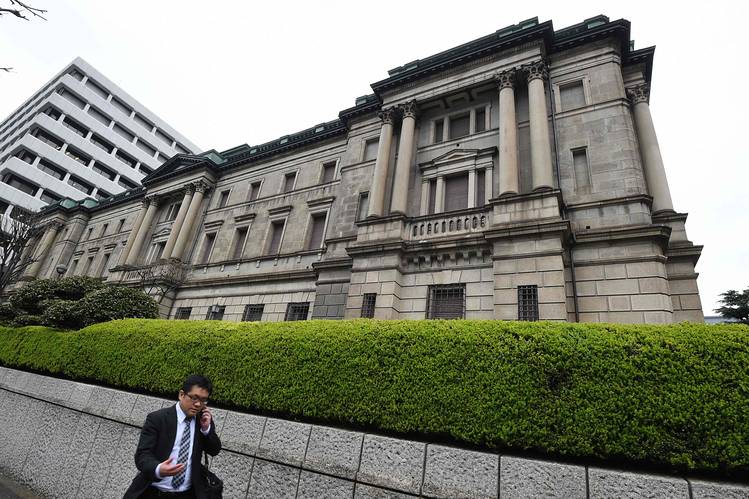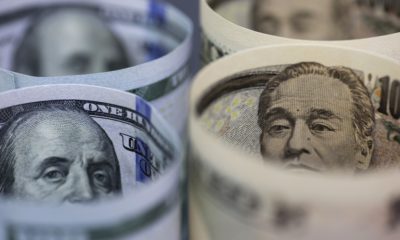- Bank of Japan’s Dovish Bent Reinforces Asia’s Policy Divergence
The Bank of Japan’s determination to press on with its unprecedented monetary stimulus leaves it out of step with developed world peers, which are either raising rates or debating how to start normalizing policy.
Yet in its own region — Asia — the BOJ is far from alone. While the People’s Bank of China is turning to open market-operations and lending tools to curb excessive leverage in parts of the financial system, it’s holding benchmark rates at all time lows to keep growth humming. Slowing inflation in India has put the prospect of more easing back on the table, and the regions’ smaller central banks are also signaling no rush to raise borrowing costs.
HSBC Holdings Plc sees no tightening in Asia through to the end of 2018. That’s in contrast to the U.S., where interest rates are already on the way up (though how quickly remains an open question) and Canada, where the central bank last week raised rates for the first time in seven years. And while monetary accommodation remains in place for now in Europe, the debate on how to rein in stimulus is underway.
“This is a major decoupling of Asian central banks from the Fed,” said Robert Subbaraman, chief economist for Asia ex-Japan at Nomura Holdings Inc. in Singapore.
In Japan, the world’s petri dish for central bank experiments, the BOJ Thursday kept its monetary stimulus program unchanged even as it pushed back the projected timing for reaching 2 percent inflation for a sixth time.
The BOJ now expects to hit its price goal around the fiscal year starting April 2019, versus a previous projection of around fiscal 2018. It also cut its inflation estimates for the current and next fiscal years.
“Risk to both economic activity and prices are skewed to the downside,” the BOJ said in its outlook.
That leaves the prospect of a steep reduction of its balance sheet or a shift to steering the economy through conventional monetary policy appearing as remote as ever.
Not only is the BOJ nowhere close to exiting its massive stimulus program, it may yet need to unleash even more if it is to ward off deflation, said Shane Oliver, chief economist at AMP Ltd. in Sydney. “The BOJ may yet be forced to experiment with even newer tools,” he said.
Unlike the Fed’s Janet Yellen, Kuroda hasn’t signaled any plans to shrink the 500 trillion yen ($4.5 trillion) balance sheet, which is almost the entire size of the nation’s economy, the world’s third-largest, and the highest ratio against GDP among major nations.
It’s a similar status quo across the region.
Australia’s central bank has kept interest rates at a record-low 1.5 percent since August as it tries to smooth the economy’s transition away from mining investment-led growth. Underscoring the Reserve Bank of Australia’s policy pickle, the mere mention of a theoretical nominal neutral interest rate of 3.5 percent in minutes of last month’s meeting released Tuesday was enough to send the Australian dollar to a two year high — a development the RBA has long warned risks undermining the economy’s transition.
“They are in a bind where they have one eye on the labor market, one eye on growth rates, one eye on property and one eye on the Australian dollar,” said Richard Holden, a professor of economics at the UNSW Business School in Sydney. “If you are trying to target four things with one policy tool, that is essentially impossible to do.”
India’s central bank is also in a quandary. Tipped by some analysts to lower interest rates again, it’s also being forced to suck liquidity out of the banking system after a government decision last year to cancel almost 86 percent of currency in circulation resulted in a flood of money into the nation’s banks, which is still being mopped up.
“It’s like a doctor giving medicines to control diabetes and then recommending that the patient be given lots of glucose,” said Rupa Rege Nitsure, chief economist at L&T Finance Holdings Ltd.
The risk of an inflation outbreak in Asia can’t be fully ruled out given its vulnerability to swings in food and energy prices and investment flows.
“Inflation will surely return,” Shang-Jin Wei of Columbia University and previously Chief Economist of the Asian Development Bank.
But one reason Asia isn’t scrambling to normalize is that monetary policy in many economies never became quite as abnormal in the first place (Japan being the region’s outlier). Asia’s buffers are in good shape too, with most economies boasting plentiful reserves, solid external positions and favorable investment flows, meaning there’s no imperative to keep policy in step with the U.S. for now.
The world’s fastest growing region appears to have the lowest odds of rate increases and that outlook is unlikely to change soon, said Frederic Neumann, co-head of Asian economic research at HSBC Holdings Plc in Hong Kong.
“Policy rates will remain nailed to the floor for a long while,” he said.

 Naira4 weeks ago
Naira4 weeks ago
 News4 weeks ago
News4 weeks ago
 Naira4 weeks ago
Naira4 weeks ago
 Travel3 weeks ago
Travel3 weeks ago
 Jobs4 weeks ago
Jobs4 weeks ago
 Naira3 weeks ago
Naira3 weeks ago
 Naira3 weeks ago
Naira3 weeks ago
 Investment4 weeks ago
Investment4 weeks ago




























